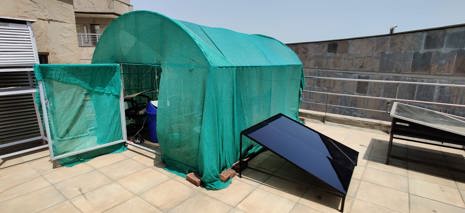Intro and background:
To provide sustainable energy for all, we urgently need to enhance the efficiency and affordability of high performing appliances.
The Efficiency for Access Design Challenge invites teams of university students from around the world to create affordable, high-performing off-grid appliances and enabling technologies to address this need.
As part of the Challenge, Efficiency for Access’ Donor Co-Chair, the IKEA Foundation, awards funding to students to create physical or computer-generated prototypes of their designs, so that they can test out and develop these further.
Why create a prototype?
A prototype is a simple, experimental model of a proposed solution used to test or validate ideas, design assumptions, and other aspects of its conceptualisation quickly and cheaply. Developing and testing a prototyping allows students to bring their ideas to life and test some of the assumptions used in the design process.
Prototypes are not limited to functioning models. Examples of the many forms that prototypes can take include simple sketches or storyboards used to illustrate a proposed experiential solution or paper or digital model. The criteria in the Challenge does not require full product prototyping. Students can prototype a small part of their solution (the digital interface of an electric cooker for example) to test that specific aspect or component.
Throughout the history of the Challenge, participants have created a huge variety of prototypes, covering a range of technologies. Last year, student Souryadeep Basak, alongside his teammate at the TERI School of Advance Studies in India, created a solar-powered, hydroponic fodder unit and prototype to aid livestock farmers.
The problem:
About 60% of India’s population relies on agriculture for livelihood. Despite having the greatest livestock population globally, Indian farmers are still critically dependent on income from crops to sustain their lives. Studies have shown that livestock has the tremendous potential to supplement the income of smallholder farmers, most of whom live in regions with low electricity access. However, due to the nutritional deficiency caused by underfeeding and poor-quality food, the yield from livestock like cattle, sheep, and goats is not enough to provide sufficient income. Technological intervention and suitable economic policies could help increase livestock productivity and reduce the income insecurity of farmers.
The design solution:
Souryadeep and his team created a solar-powered, hydroponic fodder unit to help address the problem. The solar powered hydroponic fodder unit was designed to ensure a base income for agro communities in India.
The driving design principle was to achieve minimum capital cost and maximum use of locally available materials. The prototyping funding enabled the team to implement multiple rounds of prototyping and troubleshooting. The team was able to select facade material through simulating local climates, using Rhinoceros 7 with Honeybee plugin. Using PVC pipes and shade nets, an affordable yet effective unit was designed. Open-source microcontroller Arduino Uno (ATMega328) forms the heart of the control system, fed by temperature, humidity and pH sensors. Prime mover selection for DC application proved to be a challenge, however a 12V DC bus was created which supplies all actuators within the fodder unit. 2 solar panels of 118Wp each were connected in parallel to a solar charge controller, which in turn was connected to the load and a 100Ah battery. Besides the fodder unit, Souryadeep and his team also developed designs and created a prototype of a vertical hydroponic system for vegetables and herbs.
The prototype enabled the team to create a low-cost, soilless method of fodder production, unrestricted by land constraints or livestock count. Integration of solar panels as shades helped to further optimise the unit, and the DC grid makes the need for an inverter redundant. LED intensity and spectrum automation was also tested but was found to be unnecessary when growing fodder. However, lighting through DC LEDs could be a major avenue for exotic hydroponics in off-grid areas.

Outcome and impact
As an extension of the original design, the team are working on scaling up the project to farming inside shipping containers in an energy efficient manner.
The fodder unit can be adapted for local requirements, with zero design changes. For example, providing fodder for Pashmina goats in Ladakh (cold desert) could save thousands of Pashmina goats from perishing in the harsh winter, preventing loss of local economic assets. Similarly, in the coastal plains of India, due to saline water ingress and unpredictable rainfall, rice seedlings are at risk. The fodder unit can be adapted as a paddy nursery unit in these situations.
The funding mentioned at the outset enabled the creation of prototypes which could be adapted and improved upon. Souryadeep and his team received a silver award at the Efficiency for Access Design Challenge Grand Final 2021.
The Efficiency for Access Design Challenge team is exhibited at the Engineering Design Show 2022 on stand C27 . To find out more, please visit the Efficiency for Access Design Challenge website.











